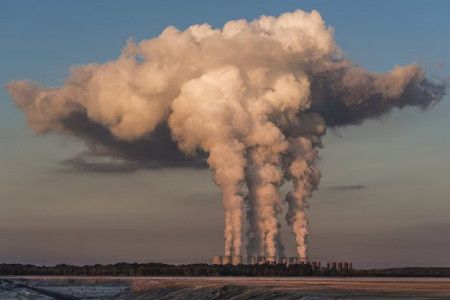In the previous period, the citizen air quality network was expanded. New sensors have been installed throughout Serbia, primarily in those environments where there has been no real-time monitoring in the state and local network. Belgrade Open School, in cooperation with the "Eco Guard", came into contact with activists from all over Serbia, who expressed interest in "joining" our network.
The main goal of establishing the network is for citizens to receive real-time air quality information. In addition, the goal is to involve citizens in air quality monitoring, guidance on air quality standards, obligations and competencies of institutions, and to jointly put the issue of air monitoring and protection on the agenda of decision makers in their communities.
The daily limit for PM10 particles is defined (50 µg/m3). This limit value shouldn’t be exceeded more than 35 times during one year.
.gif)
With a click on the name of the city you can get the information about the daily average values of the PM10 particles in Alibunar, Bečej, Beograd, Čačak, Drmno, Ečka, Elemir, Futog, Gornji Milanovac, Inđija, Kličevac, Kostolac, Kragujevac, Kraljevo, Lazarevac, Novi Pazar, Obrenovac, Pančevo, Paraćin, Popovac, Požarevac, Prijepolje, Raška, Senta, Sremska Mitrovica, Sremski Karlovci, Stari Kostolac, Subotica, Šabac, Trstenik, Valjevo, Veternik, Vranje, Vrbas and Zrenjanin (in Serbian).
.gif)
With a click on the name of the city you can get the information about the daily average values of the PM2.5 particles in Alibunar, Bečej, Beograd, Čačak, Drmno, Ečki, Elemir, Futog, Gornji Milanovac, Inđija, Kličevac, Kostolac, Kragujevac, Kraljevo, Lazarevac, Novi Pazar, Obrenovac, Pančevo, Paraćin, Popovac, Požarevac, Prijepolje, Raška, Senta, Sremska Mitrovica, Sremski Karlovci, Stari Kostolac, Subotica, Šabac, Trstenik, Valjevo, Veternik, Vranje, Vrbas and Zrenjanin (in Serbian).
Similar to the official air quality reports:
In the following infographics you can see the average concentrations of PM10 and PM2.5 per month, in different cities of Serbia.
Data from the monthly values are in some cases based on a small number of measurements and therefore it is necessary to keep in mind this limitation. You can view the start and the end data for all sensors here.
----------------------------------------------------------------------
Methodological notes
The database is compiled on the basis of data available through the website https://maps.sensor.community/grafana/d/GUaL5aZMz/pm-sensors?orgId=1.
The entire database can be downloaded the in csv format at the address here.
The program R: R Core Team (2021) was used for data analysis. R: A language and environment for statistical computing. R Foundation for Statistical Computing, Vienna, Austria. URL https://www.R-project.org/. The key packages used in the analysis are:
- Wickham et al., (2019). Welcome to the tidyverse. Journal of Open Source Software, 4(43), 1686, https://doi.org/10.21105/joss.01686
- Joe Cheng and Carson Sievert (2021). crosstalk: Inter-Widget Interactivity for HTML Widgets. R package version 1.1.1. https://CRAN.R-project.org/package=crosstalk
- Carslaw, D. C. and K. Ropkins, (2012) openair --- an R package for air quality data analysis. Environmental Modelling & Software. Volume 27-28, 52-61.
Photo source: Freepik.com

